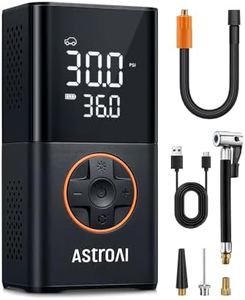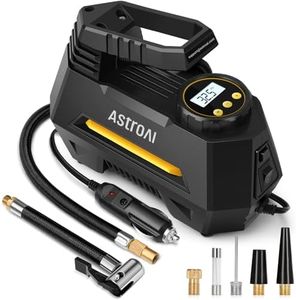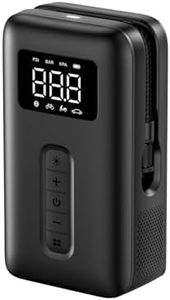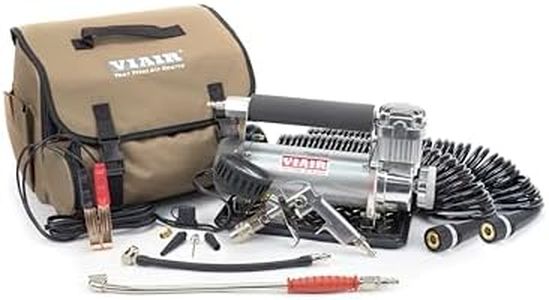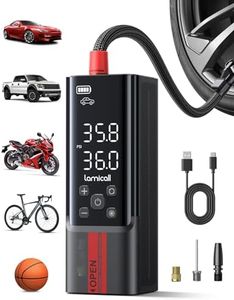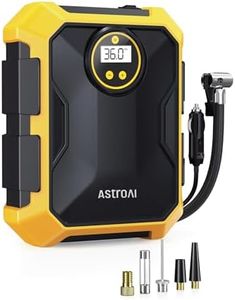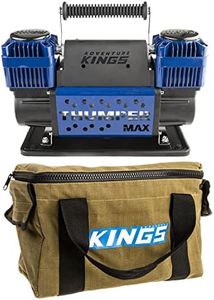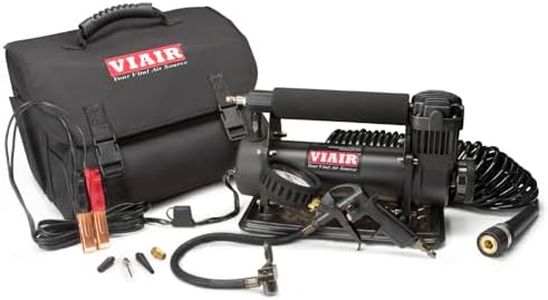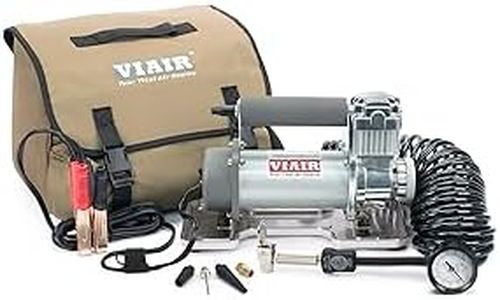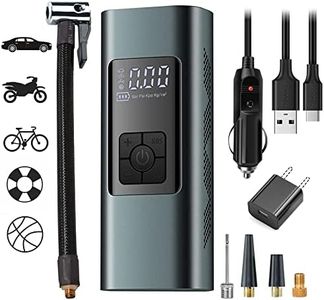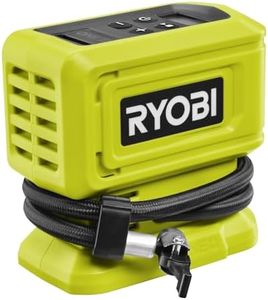We Use CookiesWe use cookies to enhance the security, performance,
functionality and for analytical and promotional activities. By continuing to browse this site you
are agreeing to our privacy policy
10 Best Portable Air Compressor For Truck Tire
From leading brands and best sellers available on the web.Buying Guide for the Best Portable Air Compressor For Truck Tire
Choosing the right portable air compressor for truck tires is important to ensure that you're prepared for emergencies and routine maintenance. The right compressor will make it easy and fast to inflate your truck tires whether you're on the road or at home. Carefully consider how, where, and how often you plan to use your compressor as this will influence which features are most important for you.Maximum PSI (Pounds per Square Inch)PSI refers to the maximum air pressure the compressor can deliver. This is crucial because truck tires usually require higher pressures compared to regular car tires. If the compressor can't reach the right PSI, it won't fully inflate your tires. For most trucks, compressors with a maximum PSI between 100 and 150 are common. For light trucks or SUVs, 100 PSI may be enough, but larger vehicles may need 120 PSI or higher. Always check your tire's recommended pressure and ensure the compressor exceeds that number so it can handle the job comfortably.
Air Flow Rate (CFM/LPM)Air flow rate, measured in Cubic Feet per Minute (CFM) or Liters per Minute (LPM), tells you how fast the compressor can deliver air. Higher air flow means the tire inflates more quickly. Small compressors often provide less than 1 CFM, which can be slow for truck tires. Mid-range units offer between 1 and 2 CFM and suit most truck owners for occasional use. Heavy users or those with very large tires may want compressors exceeding 2 CFM. Think about how often and how many tires you'll be inflating; more frequent users should prioritize a higher air flow.
Duty CycleDuty cycle tells you how long the compressor can run before it needs to rest, usually expressed as a percentage or in minutes per hour. For example, a 50% duty cycle means it can run for 30 minutes out of every hour. This matters if you need to inflate several tires in one go or want to run air tools. Short duty cycles are fine for emergency top-ups, while larger maintenance jobs will benefit from longer cycles. If you have multiple large tires, choose a compressor with a higher duty cycle so you don't need to wait between tires.
Power SourcePortable compressors usually get power from your vehicle’s 12V outlet (cigarette lighter), direct battery clamps, or sometimes even standard household outlets. The source determines convenience and power. 12V plug-in models are very portable and simple but may be less powerful, while battery-clamp models often provide higher performance and are ideal for bigger truck tires. Your typical scenario matters: if you expect to use the compressor far from power outlets, ensure it can run comfortably from your truck’s battery.
Portability and SizePortability is about how easy the compressor is to carry and store in your truck. Compact models are lightweight and fit into small spaces, making them ideal for emergencies or occasional use. Larger units may offer more features or higher power but can be bulky. Consider your available storage space in the vehicle and how far you’re willing to carry the unit. If you travel light, a smaller compressor is easier to manage, but make sure it’s still strong enough for your tires.
Hose Length and Cord LengthThese measurements tell you how far the compressor can reach from the power source to your tires. Trucks are larger, so you often need longer hoses and cords. Short hoses might require moving the compressor around the vehicle, which can be inconvenient. Look for compressors with extended hoses and cords or consider models with hose extensions. If you drive a long pickup or large truck, make sure the hose can reach all tires from your chosen power source.
Built-in Gauge and Auto ShutoffA built-in pressure gauge lets you monitor inflation without extra tools. Some compressors also have auto shutoff, stopping automatically when the target pressure is reached, which adds safety and convenience. Analog gauges are simple, while digital ones tend to be easier to read. If you want a hassle-free, precise inflation process, choose a compressor with a digital gauge and auto shutoff. These features are especially useful if you’re new to inflating tires or want to avoid overfilling.
